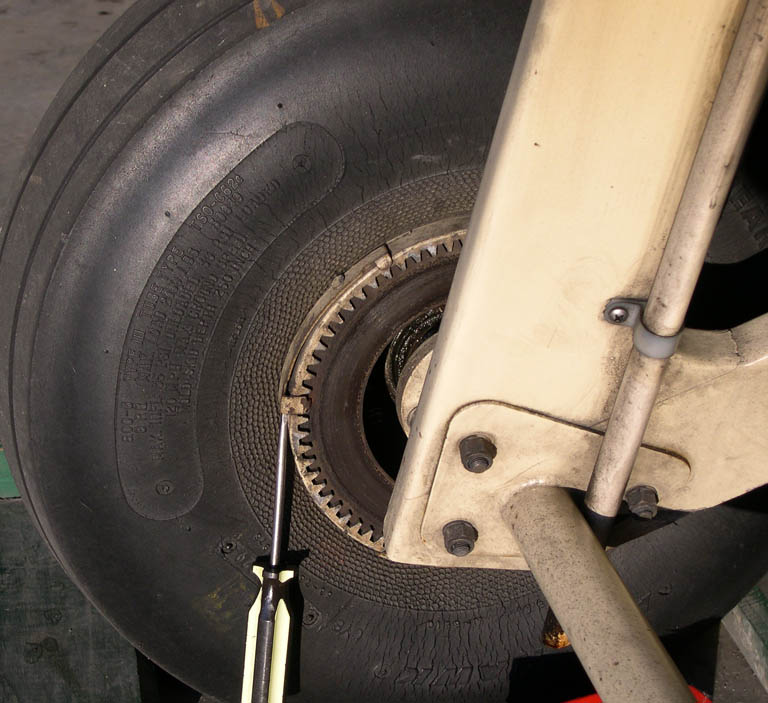
As it turned out, one of the three clips
was gone entirely, and one of them had the "head" broken off (that was
the piece I stepped on, in the taxiway). It looks like the clip
failure was precipitated by a crack in the wheel rim. Note the
picture below, taken after the wheel was removed. You can see the
"paint shadow" of the clip that's gone, the deformed rivet that used to
hold it in place, and the crack from the rivet hole to the edge of the
wheel I'm guessing the wheel torqued a bit and the cracked area
popped off the clip.
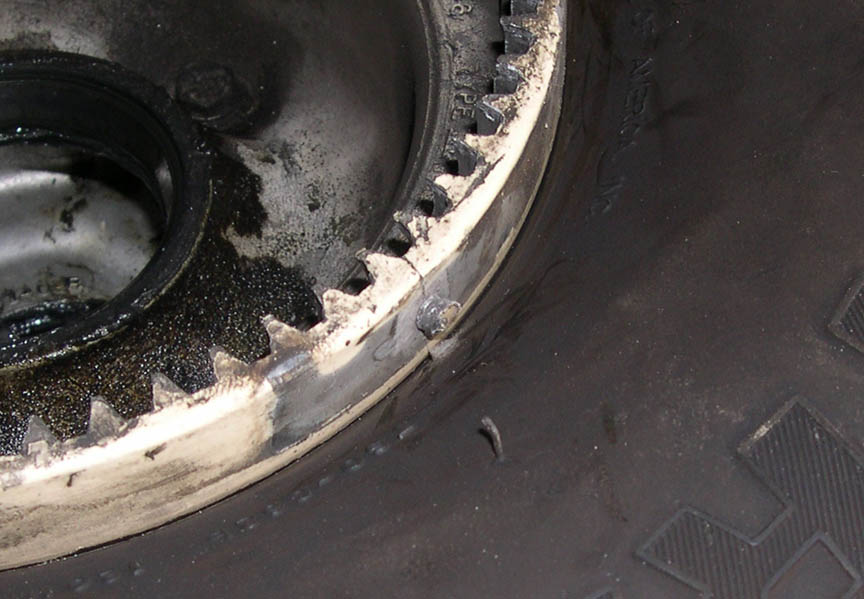

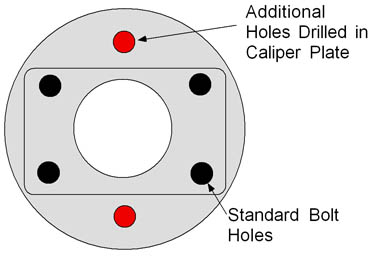 I had a bit of a problem, though...all the Grove photos
of their
lighter-duty wheels
showed that the calipers bolted to a rectangular four-hole pattern, and
I had a three-hole circular pattern on my Fly Baby.
I had a bit of a problem, though...all the Grove photos
of their
lighter-duty wheels
showed that the calipers bolted to a rectangular four-hole pattern, and
I had a three-hole circular pattern on my Fly Baby.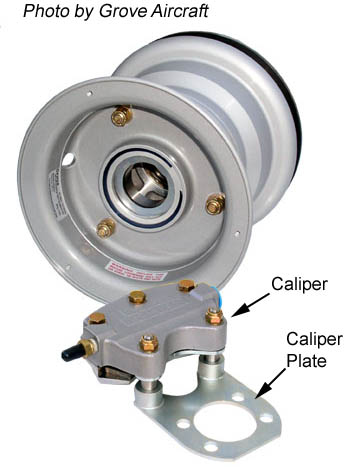 The Grove brake calipers mount to a plate attached to
the axle. The plate has two heavy-duty bushings that fit thick
pins on the caliper. The caliper isn't actually attached, it can slide
a bit, but of course the two brake pads keep the caliper in place.
The Grove brake calipers mount to a plate attached to
the axle. The plate has two heavy-duty bushings that fit thick
pins on the caliper. The caliper isn't actually attached, it can slide
a bit, but of course the two brake pads keep the caliper in place.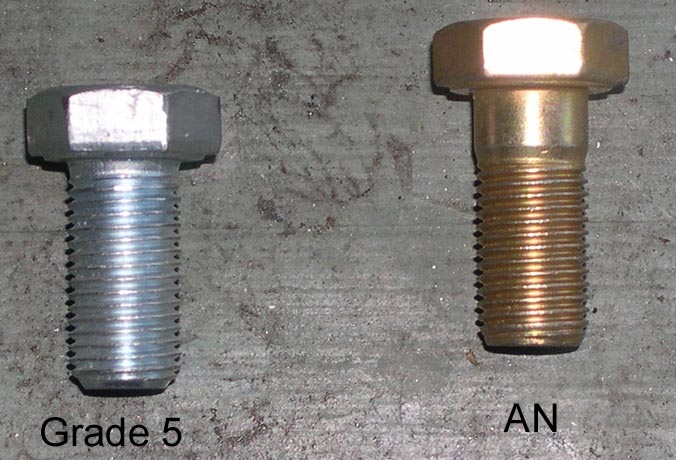
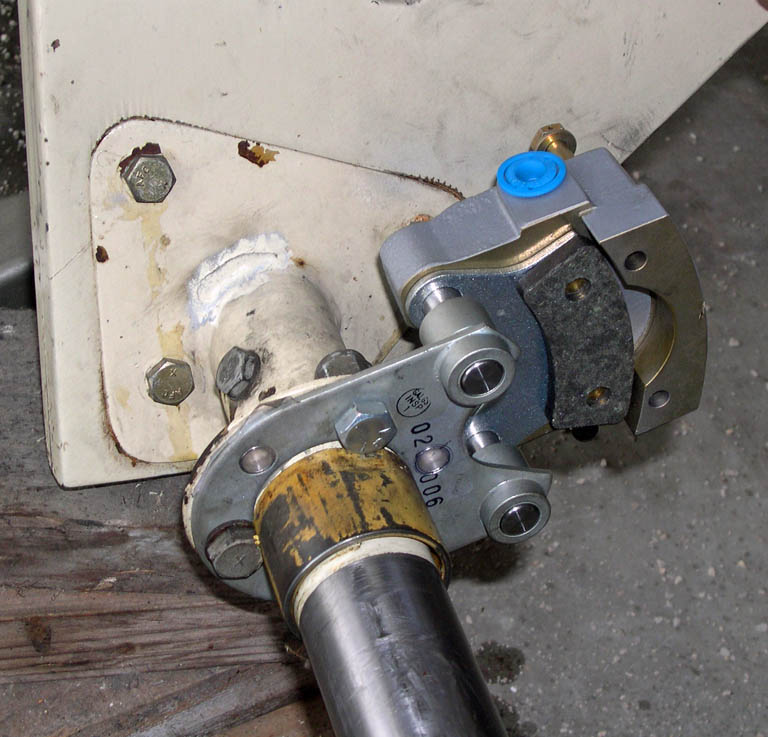
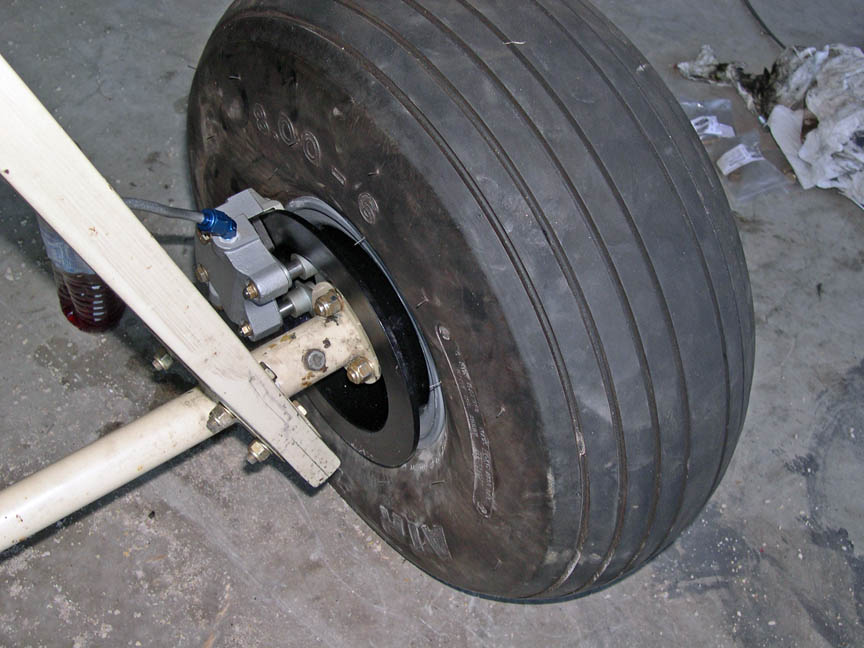
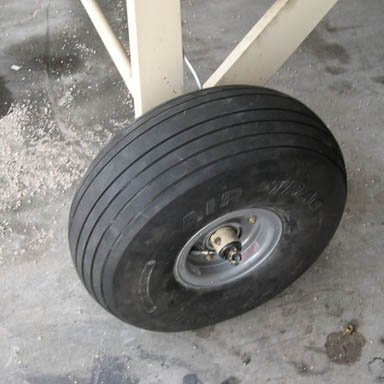 Finally, I had a chance to try it out. A good
thorough look-over of the wheels and brakes, then roll the plane
out. My plan was to taxi around the airport for a while, then
bring it back to the hangar and re-inspect. The break-in instructions
said to taxi for a while with the brakes dragging and them let them
cool.
Finally, I had a chance to try it out. A good
thorough look-over of the wheels and brakes, then roll the plane
out. My plan was to taxi around the airport for a while, then
bring it back to the hangar and re-inspect. The break-in instructions
said to taxi for a while with the brakes dragging and them let them
cool. Return to the Tech
Page
Return to the Tech
Page